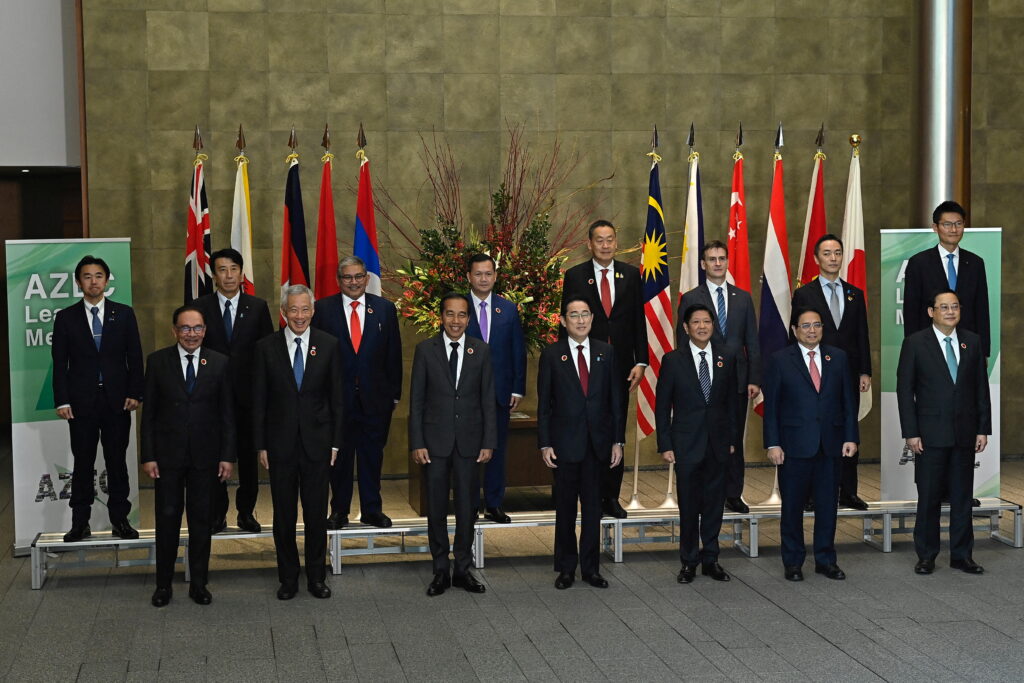ASEAN is the world’s economic dark horse and is on its way to becoming a global centre of growth. As ASEAN member states are generally dependent on trade, it is worth examining how its trade developed in 2023.
Despite efforts by member economies to promote intra-regional trade, most ASEAN trade was with extra-regional countries in 2023. The percentage of intra-ASEAN trade in relation to member states’ total trade experienced a decline from 22.5 per cent in the first three quarters of 2022 to 21.8 per cent in the corresponding period in 2023.
This trend may be attributed to the relocation of production and the shifting of supply chains to Southeast Asia. This development may benefit member states’ economic development but also make them more vulnerable to an increasingly turbulent global market. Despite endeavours to diversify their trading partners, ASEAN member states’ trade has become increasingly focussed on China. According to a recent study, trade between China and ASEAN will grow by US$616 billion over the next decade — the largest absolute increase in the world.
China remained the largest trading partner for Cambodia, Myanmar, Malaysia, Singapore, Indonesia and Vietnam between January–November 2023. China’s importance for Brunei, Laos, Thailand and the Philippines has also steadily increased. For instance, China emerged not only as the Philippines’ largest supplier of imported goods of the year, but also had the largest import value for every month.
This expanding trade with China is a result of the ongoing and escalating geopolitical tensions between China and the West, especially the United States. On the one hand, China needs to import more raw materials to support its self-sufficiency strategy in critical technologies and industrial upgrading. On the other hand, Southeast Asia has emerged as a critical trade transit corridor connecting Western countries and China.
ASEAN is the third-largest economy in Asia and the fifth-largest in the world. Being among the most sizable emerging markets globally, the bloc possesses considerable consumption potential. This makes the ASEAN region critical for China to tackle problems caused by its weak domestic demand and overcapacity in production.
The so-called ‘spaghetti bowl phenomenon’ is still gaining momentum. Besides the Regional Comprehensive Economic Partnership (RCEP), ASEAN signed an upgraded ASEAN–Australia–New Zealand Free Trade Area and has been engaged in discussions with China regarding a China–ASEAN Free Trade Agreement (FTA) 3.0.
Individual ASEAN member states have also pursued further FTAs in 2023. For example, Vietnam signed an FTA with Israel in July and announced its intention in November to seek trade deal with Turkey. Thailand and the European Union resumed their FTA negotiations in March 2023. Since April, Indonesia began negotiating an FTA with the Eurasian Economic Union. The continuing proliferation of FTAs suggests either a low utilisation of existing FTAs or that the implications of FTAs extend beyond the economic sphere.
Southeast Asian countries are concerned about rising protectionism and deglobalisation. Though they have been reiterating their support for free trade, their actions have not always aligned with their words. Resource nationalism is on the rise. Indonesia extended its export ban from unprocessed nickel to bauxite since June 2023. In October, Malaysia announced that it would prohibit the export of raw rare earth materials. These countries hope to attract more foreign investment, develop domestic industry and move up global value chains by imposing such bans. But the effectiveness of such policies remains to be seen.
Digital protectionism, due to concerns over data security and national security, has been continuously fermenting. In July 2023, Cambodia reportedly drafted a personal data protection law in which all data controllers are required to store users’ data within Cambodia. Even the Philippines, which used to advocate for the free flow of cross-border data, was also reported in September to have proposed a Presidential Executive that would severely restrict the transfer of data overseas.
Most ASEAN member states have implemented export-oriented economic strategies, and exports have driven almost all their economic growth in the past decades. But the contradiction between economic nationalism and the enthusiasm for open trade indicates that ASEAN member states are increasingly confronted with the conundrum of how to pursue new domestic development in light of challenges posed by free, open and increasingly digitalised trade.
ASEAN member states are still adapting to the rapidly evolving global market. Given that the geopolitical tension between China and the West is not likely to ease anytime soon, the ASEAN market will become increasingly critical for China’s economic growth. As Southeast Asian countries are still searching for the right balance between protectionism and liberalisation, all three trends of ASEAN’s trade — increasing dependence on China, the proliferation of FTAs and rising economic nationalism and protectionism — are likely to persist in 2024 and beyond.
Xirui Li holds a PhD from the S Rajaratnam School of International Studies at Nanyang Technological University, Singapore.

